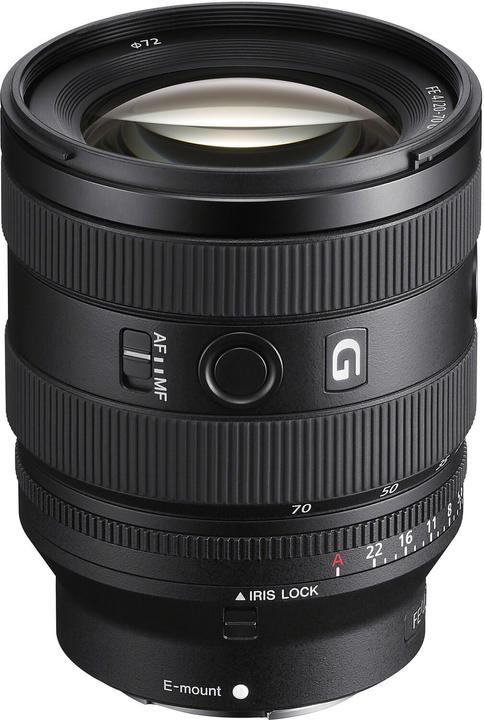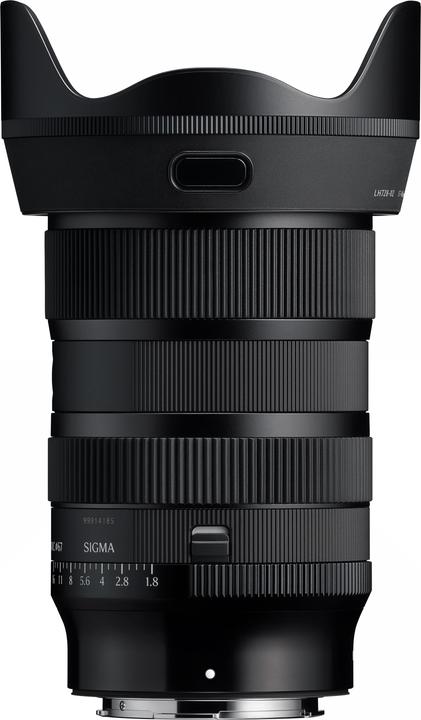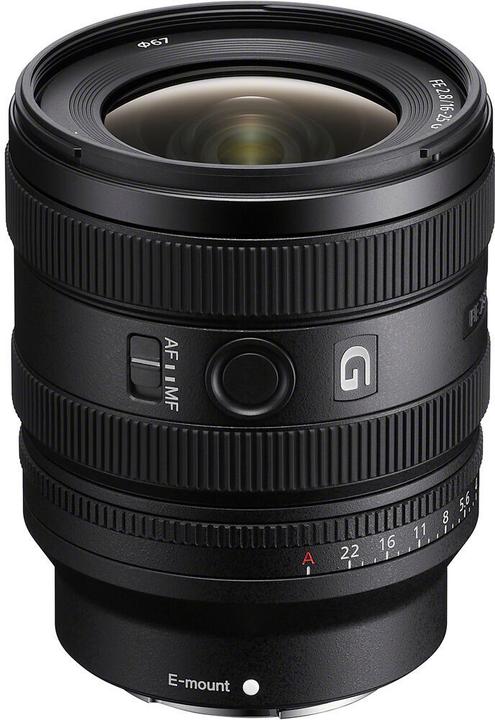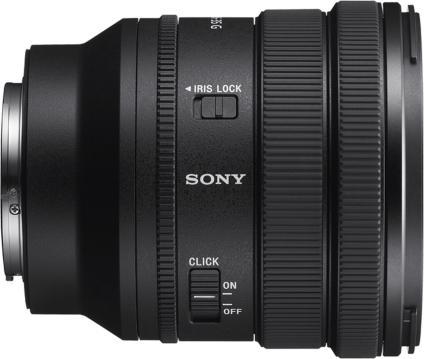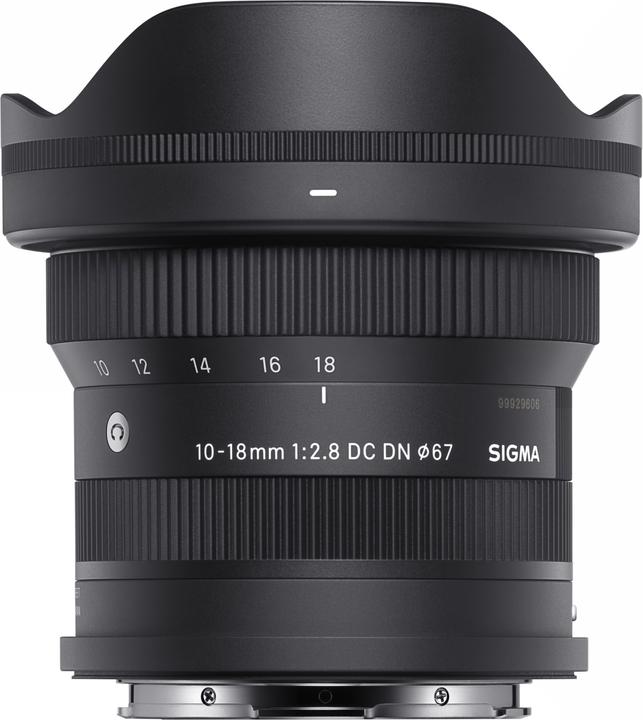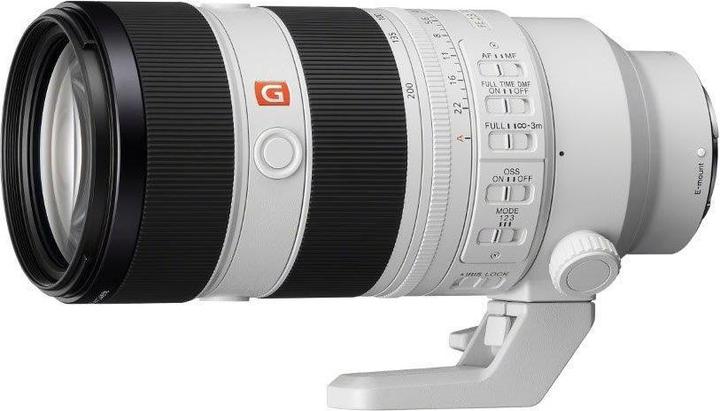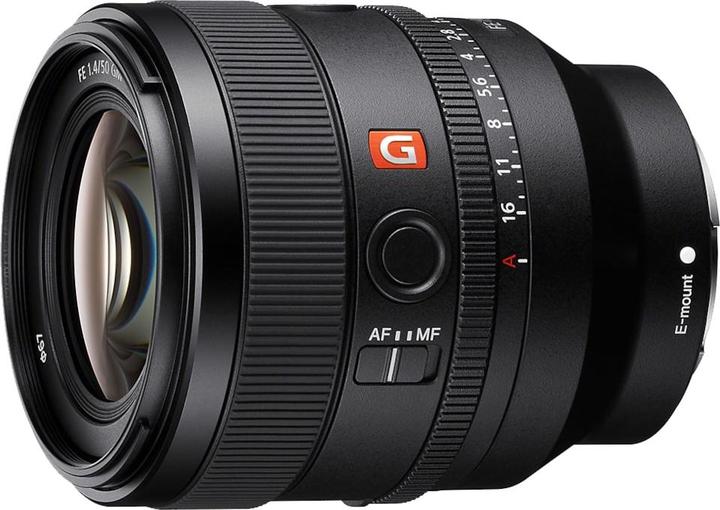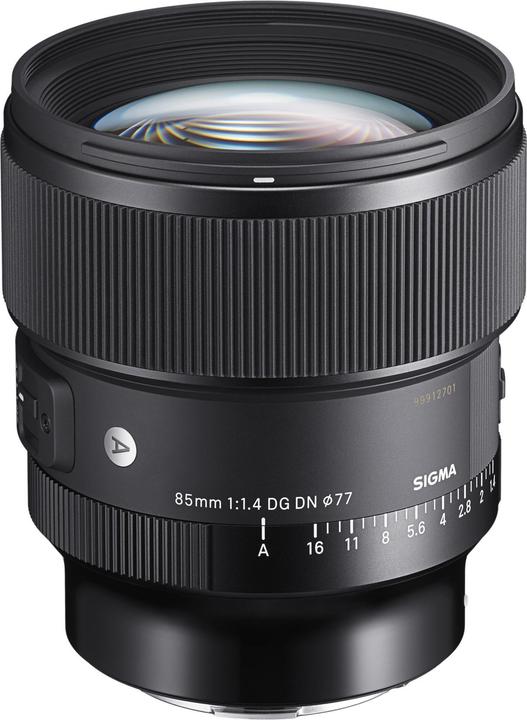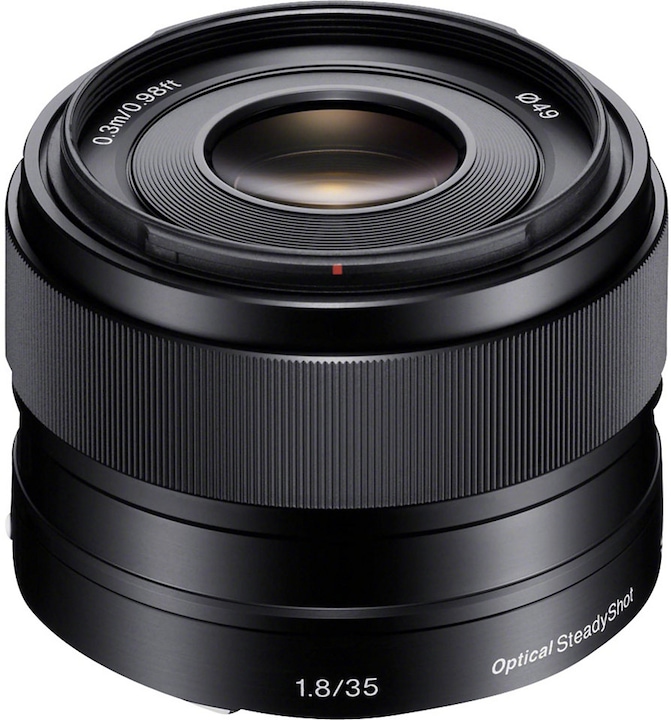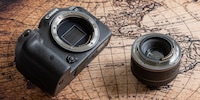
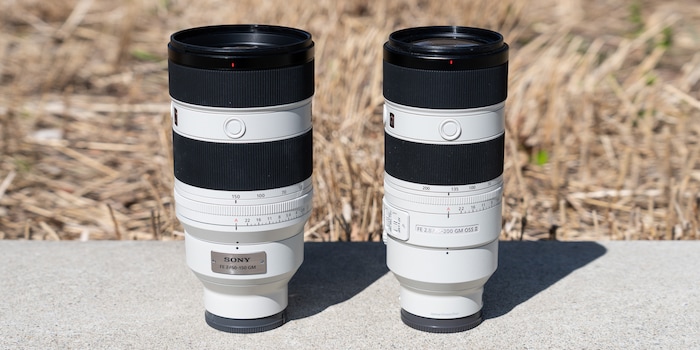
The best lenses for Sony cameras as of July 2025
Which lens is the top dog? Let this guide serve as an overview of your options for Sony’s E-mount as well as my favourites.
Lenses are a dime a dozen. If you use a Sony camera, your options are particularly varied: the Japanese manufacturer currently has 81 E-mount lenses in its range, as well as countless others from third-party manufacturers such as Sigma or Tamron. This guide is meant to serve as an overview. Mind you, I’ll also pick out a few favourites that I like.
First off, however, four rules:
- I’ve tried many of these lenses myself, but not all of them, and not to the same extent. So, on top of my own reviews, this article will also base its recommendations on well-founded tests from other portals such as DPReview, PetaPixel, OpticalLimits and DxOMark.
- The lenses here are my personal favourites. They fit my requirements, but yours may be completely different. Look at them as inspiration, not the one truth.
- I’ll talk about more brands soon. I’m starting with Sony because I use its products myself and have recently been able to test a lot of lenses in direct comparison.
- If all those numbers and letters in the product names are making your head spin, there’s a glossary at the bottom.
Standard zoom
There’s a huge range of standard zooms for full-frame cameras with E-mounts. You can find almost every conceivable compromise between image quality, speed, weight and price.
Here are my top models:
- If I could only buy one lens, it’d be the Sony FE 28-70mm f/2 GM. Using high speeds in your photography is a game changer. It can replace several fixed focal lengths and delivers first-class imaging. At 918 grammes, this lens isn’t exactly a featherweight, but it does offer a constant f/2 aperture. Which also pumps up the price.
- I like lightweight lenses too. The Sony FE 20-70mm f/4 G weighs only 488 grammes, is crisp, focuses quickly and doesn’t cost too much. The additional four millimetres at the short end compared to other standard zooms doesn’t sound like much, but for me it can replace a dedicated wide-angle lens. I’m happy to accept a lower light intensity for this.
- The brand new Sigma 17-40mm F1.8 DC Art for APS-C cameras corresponds to a full-format 26-60mm f/2.5 in terms of focal length and depth of field. It’s as revolutionary for small sensors as the Sony FE 28-70mm f/2 GM is for large ones. The weight (525 g) and price are perfectly acceptable for this performance.
Other good full-format options:
- Sony FE 24-70 mm f/2.8 GM II: this high-end classic offers outstanding image quality, fast speeds and a good zoom range. At 695 grammes, Sony’s new version weighs less than similar models from Canon (950 g), Nikon (900 g) or Sigma (745 g).
- Sigma 24-70mm f/2.8 DG DN II Art: practically the same performance as Sony’s 24-70 at half the price? It’s exactly what you get with Sigma’s new standard zoom. If you can cope with 50 grammes more and that little bit less sharpness, this lens offers sensational value for money.
- Tamron AF 28-75 mm f/2.8 Di III VXD G2: Tamron’s standard zoom costs significantly less than Sigma’s. And here, too, you get great image quality for your money in a lightweight package (540 g). However, the manufacturing isn’t on the same level and the four-millimetre shorter initial focal length makes the lens less versatile.
- Sony FE 24-105mm f/4 G OSS: although it’s been around for a few years, this lens remains a good one-and-done choice. It’s sharp, fast, light (663 g), affordable and offers a versatile focal length range at an acceptable speed. The image stabiliser in the lens is a useful addition to stabilised sensors, especially in the telephoto range.
- Tamron AF 35-150mm f/2.0-2.8 Di III VXD: an unusual lens that sits somewhere between a standard zoom and telephoto zoom. With its focal length range, it’s suitable as an all-purpose weapon for portraits or street photography. The high light intensity takes its toll in the weight (1,165 g) and size (158 mm) department – but fortunately not as a high price.
Other solid options for APS-C:
- Sony E 18-135mm f/3.5-5.6 OSS APS-C cameras are great when you’re travelling – and I like things to be as uncomplicated and light as possible on vacation. This superzoom fulfils both criteria at a fair price. It doesn’t have the newest tech in terms of image quality and light intensity, but it’s a well-rounded and lightweight (323 g) overall package.
- Sony E 16-55mm f/2.8 G: if you want better speed and a smaller zoom range, Sony’s 16-55mm is the classic APS-C lens. The imaging performance and manufacturing are top-notch, and it weighs 494 grammes.
- Sigma 18-50mm f/2.8 DC DN Contemporary: weaker wide-angle shots and less zoom than Sony. On the other hand, this lens is truly tiny (75 mm long, 290 g heavy) and happily costs comparatively little. A great choice for small kits with excellent value for money.
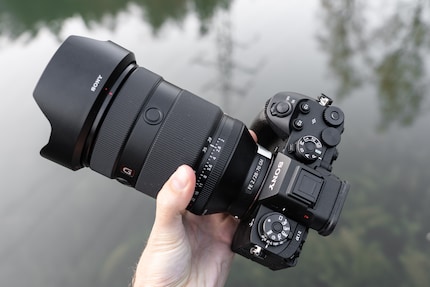
Source: Samuel Buchmann
Wide-angle zoom
You’re also spoiled for choice in the wide-angle range. In addition to a plethora of high-end lenses, there are also cheaper alternatives out there – especially if you can do without a little light intensity or range.
Here are my top models:
- I mostly use my wide-angle zooms at the short end; I can cope with less reach at the long end. That’s where the Sony FE 16-25mm f/2.8 G comes in handy. Compared to the classic Sony FE 16-35mm f/2.8 GM II, it weighs almost 150 grammes less (409 g in total). It’s just as good visually and costs less than half as much.
- Especially for landscape photography, you usually use smaller apertures and don’t necessarily need an f/2.8 lens. The Sony FE PZ 16-35mm f/4 G is a real lightweight (353 g) with convincing imaging performance. The electronic zoom mechanism is still a matter of taste.
- For APS-C cameras, a Sigma lens is once again on my favourites list. The Sigma 10-18mm f/2.8 DC DN is very light for its speed (255 g) and very sharp for its price. I can get over the fact it feels a bit cheap.
Other good full-format options:
- Sony FE 16-35mm f/2.8 GM II: if you want a classic zoom range and fast speeds, there’s nothing better than the G Master from Sony. It’s visually perfect and relatively light for its performance (547 g). However, because of the high price, I’d take a close look at the alternatives.
- Tamron 16-30mm f/2.8 Di III VXD G2: a brand new lens. According to previous test reports, it offers almost the same picture quality as Sony’s G Master – for around a third of the price. It’s also somewhat lighter (440 g) due to the smaller range. You make compromises when it comes to processing.
- Sigma 16-28mm f/2.8 DG DN Contemporary: Sigma also makes an affordable and solid wide-angle zoom. It’s similar to the Sony FE 16-25mm f/2.8 G and weighs slightly more (450 g), but has a slightly greater reach and costs less.
- Sigma 14-24mm f/2.8 DG DN Art: if you’re looking for even shorter focal lengths than 16 millimetres, this lens is a good option with excellent value for money. The only drawback is its relatively heaviness at 795 grammes.
- Sony FE 12-24mm f/2.8 GM: your wallet’s stuffed, you want an extreme wide-angle, high speeds and the best image quality? Then you’ll inevitably end up with Sony’s G Master. However, it is quite chunky (847 g).
- Sony FE 12-24mm f/4 G: if you can do without an F-stop, you could save a lot of weight (565 g) and above all money with the G version of the 12-24mm. There’s virtually no compromises when it comes to imaging performance.
Other solid options for APS-C:
- Sony E PZ 10-20mm f/4 G: Sony makes this extremely light (178 g) lens with electronic zoom for APS-C cameras, which can be useful for videos. It isn’t particularly bright, but the optical quality is good. A good choice if you’re looking for the smallest possible wide-angle lens.
- Tamron AF 11-20mm f/2.8 Di III-A RXD: a solid alternative to the f/2.8 wide angle from Sigma. In comparison, however, Tamron’s lens is a little larger and heavier (335 g). You also lose a millimetre at the short end, which is surprisingly significant at this focal length.
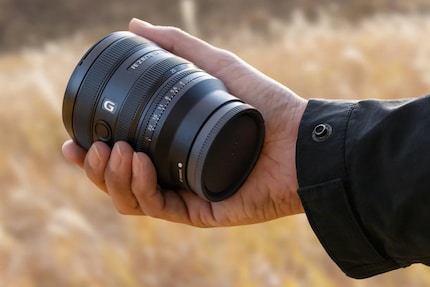
Source: Sony
Tele zoom
With long zoom lenses, the right choice depends heavily on your usage. Depending on whether you’re capturing events or small birds, you’ll need completely different focal lengths. Due to the sheer flood of options, I’m limiting the list a little more to the best of them here.
Here are my top models:
- With telephoto lenses, I appreciate a high speed. The Sony FE 70-200 mm f/2.8 GM OSS II shines with an almost perfect imaging performance and a relatively low weight (1,045 g). Its classic zoom range and constant f/2.8 aperture make it an excellent all-rounder. Unlike Canon, Sony sticks with the internal zoom mechanism at the expense of a more compact pack size.
- The new Sigma 300-600mm f/4 DG OS Sports looks like an expensive lens at first glance. But for this much glass, the price is astonishingly affordable. For comparison, the Sony FE 600 mm F4 GM OSS costs twice as much, and at 3,040 grammes, it doesn’t weigh that much less than the Sigma (3,970 g), which is also much more versatile. A dream for sports and wildlife photography.
- Only the Sony E 70-350mm f/4.5-6.3 G OSS is available specifically for APS-C sensors. It offers plenty of range, good autofocus and solid image quality for a fair price. With a weight of 678 grammes and a length of 142 mm, it’s also still light and compact.
Other good full-format options:
- Sony FE 50-150mm f/2 GM: this bright monster is a revelation for event photography and also shines in portraits. The shorter focal length compared to the classic 70-200 mm keeps the weight in check despite the fantastic speed (1,340 g). It’s just the price that really hurts.
- Sigma 70-200mm f/2.8 DG DN OS Sports: if Sony’s version of the classic is too pricey for you, Sigma offers this great alternative at almost half the price. In exchange, you have to put up with almost 300 grammes more weight (1,335 g) and make slight compromises in imaging performance. With third-party lenses, you’re also limited to 15 frames per second (FPS) with continuous autofocus.
- Tamron AF 70-180mm f/2.8 Di III VXD G2: Tamron also makes a fast telephoto zoom. The G2 version is optically in the same league as the Sigma lens, it’s just significantly lighter (855 g). In return, you sacrifice 20 mm range and some controls.
- Sony FE 70-200mm f/4 Macro G OSS II: half the speed and half the price of its big brother – and optically just as perfect. If you mainly use your telephoto zoom in good light or on a tripod, this very compact lens (794 g) from Sony is the best choice.
- Tamron AF 50-400mm F/4.5-6.3 Di III VC VXD: in this focal length range, I’d go for the affordable yet solid Tamron lens. Sony’s native alternative, the FE 100-400mm f/4.5-5.6 GM OSS is already eight years old and offers too little added value for the high price. And the Sigma version is weaker in terms of imaging performance.
- Sony FE 400-800mm f/6.3-8 G OSS: if you need even greater reach, say for distant animals, I’d prefer this lens to the various 600 mm options. It’s brand new, visually excellent, not super heavy (2,475 g) and has a lightning-fast autofocus.
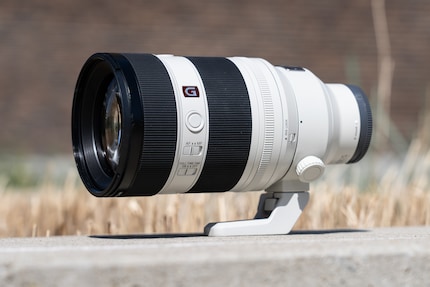
Source: Samuel Buchmann
Fixed focal lengths
There are so many fixed focal lengths for Sony E-mount that your list of good options could go on forever. That’s why I’m only picking out three of my favourite lenses here. Apart from that, you won’t go wrong with any of Sony’s G and G-Master lenses. The same applies for the fixed focal lengths from Sigma’s Art series. These usually offer better value for money, but are somewhat clunkier.
Here are my top models:
- For most people, the Sony FE 50mm f/1.4 GM won’t make sense due to its poor value for money, Especially since there’s a much cheaper alternative from Sigma. But if I could only choose one fixed model, it’d be this one – it’s got my favourite focal length, is nice and light (516 g) and offers perfect quality.
- With its Art line, Sigma offers extremely high quality at fair prices. A representative of this is the Sigma 85mm f/1.4 DG DN Art, which is in no way inferior to Sony’s G Master nearly across the board.
- The Sony E 35mm f/1.8 OSS is a small but mighty fixed focal length model, especially for APS-C cameras. It costs a little more than the Nifty Fifty for full-format lenses, but also offers better autofocus and imaging performance. The perfect addition to a travel zoom.
Glossary: GM, VC, DN – wait, what?
Lens names contain all kinds of numbers and acronyms. If you’re wondering what they mean, here’s a little glossary for Sony, Sigma and Tamron:
- FE/E, (Sony), DG/DC/DN (Sigma), Di III/Di III-A (Tamron): FE, DG and Di III refer to lenses designed for full-frame cameras. Those with the abbreviations E, DC or Di III-A are only suitable for the smaller image circle of APS-C sensors. With DN, Sigma also notes that the lens is built for mirrorless cameras.
- 24-70mm: the number in millimetres indicates focal length. A zoom has a from-to specification (e.g. 24-70mm), while a fixed focal length only has a single one (e.g. 50mm).
- f/2.8: the lower the F number, the faster the lens. With some lenses, the maximum aperture is constant (e.g. f/4), while with some zooms it depends on the focal length (e.g. f/3.5-5.6)
- OSS (Sony), OS (Sigma), VC (Tamron): lenses with these abbreviations have an image stabiliser.
- HSM (Sigma), OSD/RXD/VXD (Tamron): while Sony makes no reference to the autofocus motor in the name, this is different with Tamron. VXD is the newest and fastest motor, followed by RXD and OSD rounding out the bottom. For a while, Sigma used HSM to indicate its fast motors, but some new lenses have the even faster HLA motor, which isn’t in the name any more.
- **G/GM ** (Sony), Contemporary/Art/Sports (Sigma): with Sony and Sigma, the model line indicates the quality of a lens. G stands for Sony’s Gold line with high optical quality. Even better and more expensive flagships bear the abbreviation GM (G Master). With newer Sigma lenses, you can see whether they belong to the Contemporary (mid-range), Art (high-end) or Sports (high-end for sports photography) line.
Certain lenses have other acronyms in their names. For example, Sony developed products in collaboration with Zeiss for a while. These lenses bear the designations Sonar, Planar or Vario-Tessar and the abbreviation ZA. Tamron’s old lenses are also an incredible collection of letters, some of which I can’t list here. The complete glossaries of these manufacturers: Sony, Sigma, Tamron.
If you want to share your own experiences, feel free to put them in the comments. What are your favourite E-mount lenses? What set did you put together and what did you consider?
My fingerprint often changes so drastically that my MacBook doesn't recognise it anymore. The reason? If I'm not clinging to a monitor or camera, I'm probably clinging to a rockface by the tips of my fingers.
Practical solutions for everyday problems with technology, household hacks and much more.
Show all